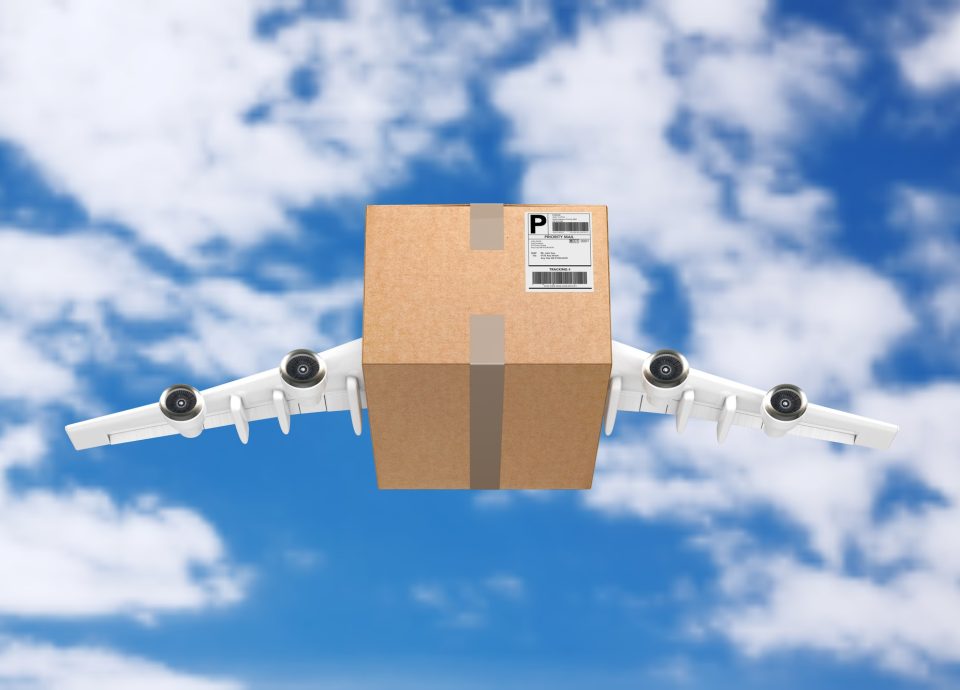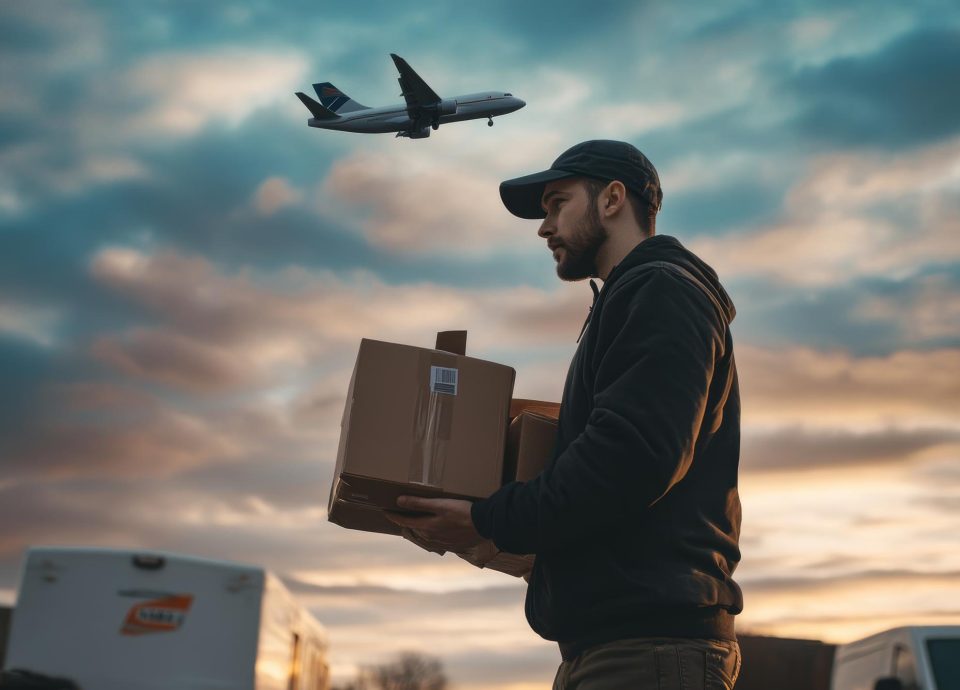When the stakes are high and the clock is ticking, businesses can’t afford uncertainty. Product launches hinge on fixed retail windows, assembly lines teeter on a missing part, and hospitals rely on lifesaving devices arriving precisely when promised. In these moments, urgent delivery turns from a convenience into an operational necessity. Done right, urgent delivery compresses transit time from days to hours, reduces touchpoints, and replaces guesswork with predictable, auditable milestones.
Sprinter Emergency Transport Inc. was built for those moments. Our team designs, executes, and recovers mission-critical moves across Canada and around the world, aligning compliance, capacity, and communication so urgent delivery performs under pressure. In this guide, we’ll show you how to make urgent delivery both fast and secure, from first-mile pickup to proof of delivery—while keeping costs, risks, and compliance in check.
What Urgent Delivery Really Means (and Why It Matters)
Urgent delivery is a coordinated, time-definite logistics solution that integrates first-mile pickup, airport or cross-border handling, security screening, linehaul transport, customs clearance, recovery, and final mile—each with defined service levels and escalation playbooks. It’s not simply paying for “express”; it’s engineering a path with fewer handoffs, tighter controls, and contingency plans.
The value proposition of urgent delivery
- Intercontinental speed measured in hours or a few days
- Predictable ETAs via protected capacity and multiple daily departures
- Reduced theft/damage risk due to fewer touches and secure nodes
- Better cash flow as inventory turns and invoices accelerate
Where urgent delivery becomes non-negotiable
- Line-down manufacturing or MRO spares
- Cold-chain pharmaceuticals and temperature-sensitive reagents
- Retail launches, pop-ups, and synchronized omnichannel events
- High-shrink, high-value commodities like electronics and luxury goods
Speed Without Chaos: Designing the End-to-End Flow
An urgent delivery promise is only as strong as the workflow beneath it. Here’s the blueprint that converts deadlines into dependable outcomes.
Step 1: Requirements, risk, and routing (R3)
Gather exact dimensions and weights, commodity specifics (DG/lithium, temperature range, fragility), service window, and payer responsibilities (Incoterms). Then select primary and alternate routings. This is where urgent delivery becomes resilient, not just fast.
Capacity strategy
- Reserve space early on passenger belly networks or freighters
- Prepare alternates by time-of-day and hub in case of irregular operations
- Use split-lot tactics (critical fraction now, balance in the next wave)
Step 2: Packaging for the real world
Design packouts that survive conveyors, forklifts, and ramp exposure. For urgent delivery, strong but light materials protect goods without inflating dimensional weight.
Proven practices
- Internal blocking/bracing to prevent movement
- Edge/corner protection and “do not stack” cones where needed
- Tilt/shock indicators for fragile cargo
- Desiccants and vapor barriers for humidity-sensitive items
Step 3: Screen-ready tender
In Canada, air cargo must comply with Transport Canada’s screening standards. Accessible packaging and proper labeling ensure the shipment clears quickly, supporting the urgent delivery clock.
Transport Canada – Air Cargo Security Program
Step 4: Documentation and pre-clearance
The fastest shipment can be stalled by a messy invoice. Align HS codes, values, serial/lot data, and consignee details across all documents. Pre-file customs entries whenever possible so urgent delivery isn’t stranded at destination.
Canada Border Services Agency – Commercial Importing
Step 5: Linehaul and in-flight visibility
Expect milestone scans: received, screened, built, departed. If weather or ATC constraints arise, a prepared reflight plan protects urgent delivery timelines.
Step 6: Recovery, bonded cartage, and last mile
Stage trucks before wheels-down to avoid warehouse queues. Use appointment control and, for sensitive goods, white-glove options to safeguard the final steps of urgent delivery.
Step 7: POD + post-move analysis
Capture time-stamped proof of delivery, seal numbers if used, and temperature data for cold chain. Review exceptions and close the loop so the next urgent delivery is even tighter.
The Economics of Doing It Right
Comparing sticker prices misses the point. The right lens is total landed cost—carrying cost, shrink/damage, penalty avoidance, and speed to cash.
- Avoid SLA penalties and retail chargebacks
- Prevent line-down losses that dwarf freight premiums
- Reduce safety stock and storage spend via predictable urgent delivery
- Convert demand spikes into sales by keeping high-velocity SKUs in stock
When a single day late risks five- or six-figure impacts, the premium for urgent delivery is the cheapest part of the equation.
Security by Design: Protecting High-Priority Goods
Security shouldn’t be a bolt-on; it must be baked into the urgent delivery flow.
Facility and chain-of-custody controls
- Screened cargo and restricted access areas at airports and secure depots
- Tamper-evident seals and photographed handoffs
- Sealed trailers for linehaul and bonded cartage
Data discipline
- Serialized items, lot codes, and MAC/IMEI numbers linked to paperwork
- ASN integration so consignees verify contents on arrival
- Event-based alerts when shipments leave tolerance (route or temperature)
Urgent delivery is safest when people, processes, and platforms align on a single source of truth.
Compliance: Keeping Fast Ships from Slow Holds
Delays rarely start in the sky—they start in the documents. Compliance turns fast into predictably fast.
- Align Incoterms and payer of charges before pickup
- Match commercial invoice, packing list, and Air Waybill
- Use correct HS codes and complete consignee tax IDs
- For lithium batteries/DG, meet IATA packaging and SoC rules
- For GDP/cold chain, maintain validated equipment and temperature logs
Clean data prevents the preventable—and keeps urgent delivery moving.
Technology That Turns Speed into Control
Fast shipping delights customers only when they can see it coming.
What a modern stack should provide
- Live milestones (tender to POD): received, screened, built, departed, arrived, customs, recovered, out for delivery
- Exception automation for reflight, weather, and customs events
- API/EDI integration so operations and finance don’t chase emails
- Role-based dashboards for execs, planners, and CX teams
When visibility is this crisp, priority shipping becomes a strategic lever—not a scramble.
Mode Selection: Air, Ground Expedite, or Hybrid?
Urgent delivery doesn’t always mean a plane—but it does mean a plan.
- Air: Long-distance, cross-border, or temperature-sensitive freight; best when hours matter
- Ground expedite: Regional point-to-point with direct routing and team drivers
- Hybrid: Air for the critical fraction; ground or ocean for replenishment
The smartest urgent delivery programs use all three—deliberately.
15 Ways to Accelerate Your Next Urgent Delivery
- Tender before noon to hit more same-day departures.
- Pre-file customs with complete invoice data and HS codes.
- Standardize carton footprints to prevent volumetric surprises.
- Keep emergency AWB templates and contact matrices pre-approved.
- Split critical SKUs across consecutive flights to hedge disruption.
- Stage bonded cartage before wheels-down to cut warehouse dwell.
- Put SLAs on screening turn times at origin.
- Share ASNs so receivers staff docks and prep space.
- Validate thermal packouts in real route conditions.
- Photograph packouts and seal numbers for claims support.
- Map weather alternates by season for each hub.
- Use tilt/shock indicators for fragile items.
- Confirm Incoterms and payer responsibilities in writing.
- Align insurance coverage to invoice value and route risk.
- Run a post-mortem on every exception to lock in improvements.
Each habit trims minutes that add up to hours—protecting your priority shipping promise.
Packaging Deep-Dive: The Physics You Can’t Ignore
The more fragile or valuable the cargo, the more packaging carries the risk.
Compression and vibration
- Choose double-wall or engineered crates rated for expected stacking loads
- Use foam densities matched to mass; too soft or too hard transmits shock
Thermal stability
- Pre-condition passive shippers; verify hold time with route-realistic tests
- For long lanes, move to active containers with telemetry to protect urgent delivery windows
Labeling and instructions
- Align handling icons with carrier SOPs
- Add clear unboxing instructions to prevent damage at receiving
Governance and KPIs: Make Performance Measurable
Urgent delivery should be managed like a program, not a series of one-off bookings.
Track what matters
- On-time performance (door-to-door) and variance
- Gateway dwell at origin and destination
- Exception rate and mean time to recovery
- Scan compliance (milestones captured)
- Invoice accuracy vs. quote
Monthly scorecards and quarterly business reviews turn anecdote into accountability.
Why Choose Sprinter Emergency Transport Inc.
When it absolutely has to move, you need more than a carrier—you need orchestration. Sprinter Emergency Transport Inc. blends capacity, compliance, and communication to make urgent delivery both fast and secure.
What you get with our team
- Capacity when it counts: access to passenger belly networks, freighters, charters, team-driven ground expedite—so urgent delivery lifts even in peak season
- 24/7 command and recovery: named operations contacts, proactive exception handling, and alternates ready before they’re needed
- Compliance baked in: lithium battery/DG fluency, validated cold chain, and audit-ready documentation that keeps priority shipping on schedule
- Secure handling end-to-end: screen-ready tender, tamper-evident seals, vault/escort options, bonded cartage at destination
- Real-time visibility: API/EDI feeds, milestone scans from tender to POD, and temperature telemetry for sensitive goods
- Transparent pricing: line-item quotes that match invoices—no surprises
If your business depends on reliable urgent delivery, our playbook turns pressure into performance.
Where the Right Plan Pays for Itself
A product launch that couldn’t slip
A consumer-tech brand needed synchronized inventory in three countries for a weekend drop. We pre-filed entries, split lots across consecutive flights, staged bonded trucks, and held a reflight plan in reserve. Stores stocked on time and ads remained profitable—priority shipping transformed risk into routine.
A plant saved from downtime
A Tier-1 supplier faced a looming line-down. We prioritized capacity, rerouted around weather, and bridged the final leg with dedicated ground. Production stayed online. The urgent delivery premium was a fraction of avoided penalties.
Cold-chain confidence
A research hospital required temperature-sensitive reagents in 36 hours. Validated passive shippers, compliant screening, and real-time telemetry protected stability. The shipment arrived within the urgent delivery window, data intact.
Turn Speed Into a Strategy You Can Trust
Unpredictable transit erodes margins and credibility. A disciplined urgent delivery program restores control—capacity to lift, processes to pass security, data to see issues early, and recovery plans when variables change. That combination safeguards revenue, reputation, and the promises your brand makes every day.
Sprinter Emergency Transport Inc. is ready to translate your deadlines into dependable outcomes. Tell us your lanes, constraints, and timelines—we’ll architect an priority shipping plan that performs when it matters most.
Need help now? Contact Sprinter Emergency Transport Inc. for a rapid assessment and flight-ready options today.
Frequently Asked Questions (FAQs)
1) When should I choose urgent delivery over standard shipping?
Choose urgent delivery when delay destroys value—line-down prevention, fixed launch dates, cold-chain integrity, or high-shrink corridors. If a day late costs more than the premium, urgent delivery is the clear choice.
2) How can I control costs while relying on urgent delivery?
Right-size packaging to cut dimensional weight, tender earlier to access more departures, split critical vs. non-critical quantities, and reserve urgent delivery for the fraction where speed changes the outcome.
3) What documents keep urgent delivery on schedule across borders?
At minimum: commercial invoice, packing list, and Air Waybill, plus any required certificates or permits. Clean HS codes, values, and consignee data enable pre-clearance and prevent holds that derail urgent delivery.
4) Can lithium batteries and electronics move with urgent delivery?
They can under strict IATA rules for classification, packaging, labeling, and state-of-charge. A compliant workflow prevents security holds and protects priority shipping timelines.
5) Is cold chain feasible with urgent delivery?
Yes. Validated passive packouts or active containers with telemetry, shorter ramp exposure, and milestone visibility make priority shipping the preferred mode for pharmaceuticals and perishables.
6) What visibility should I expect during urgent delivery?
Milestones from receipt to POD—screened, built, departed, arrived, customs status, recovered, out for delivery—plus exception alerts integrated into your systems. Visibility turns urgent delivery from “fast” into “predictably fast.”
7) How fast can Sprinter Emergency Transport Inc. launch urgent delivery on a new lane?
In most gateways, we can collect, screen, and uplift same-day with alternates pre-planned. Our 24/7 operations team manages exceptions so urgent delivery stays on schedule.




